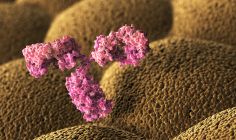Almost two years into the COVID-19 pandemic, there’s still so much uncertainty about how to live with this virus. We have safe and effective vaccines, and now masks, social distancing, and testing are normal parts of life. But there's also a new, more transmissible variant that's contributing to rising case numbers and breakthrough cases. It's still hard to know the best ways to use these tools to keep yourself, your loved ones, and your community safe.
Find out when to test and help slow the spread
Testing is an important tool to slow the spread of COVID-19 and help us get back to our daily lives and the activities that matter most, safely. A test can tell you if you’re infected (and likely to spread the virus to others) even if you don’t have symptoms.
But when should you test? And how often? Luckily, the When To Test Calculator for Individuals from WhenToTest.org can help you decide! This new, state-of-the-art tool is free to use and designed to help you:
- Understand your risk of getting COVID-19
- Understand your risk of spreading COVID-19 to other people
- Decide if you should consider getting tested
The tool was developed with support from the NIH’s Rapid Acceleration of Diagnostics (RADx®) initiative and is managed by the National Institute of Biomedical Imaging and Bioengineering.
How it works
The tool asks you a series of simple questions and uses your answers to calculate your estimated risk of having COVID-19 and spreading it to others. (It doesn’t collect any personal information.) It uses an algorithm that’s based on the most up-to-date scientific data available, and it asks about things that have the biggest impact on individual risk. The questions are about:
- Where you live. If COVID-19 rates are high in your county, your risk will be higher than someone who lives in an area with lower rates.
- Vaccination status. If you are fully vaccinated, you’re less likely to get infected with COVID-19 than someone who isn’t vaccinated, and you’re also less likely to spread it to others.
- Masking. Wearing a mask around people you don’t live with reduces your risk of getting COVID-19 and spreading it to others (even if you’re fully vaccinated).
- Social contact. Being around more people means more opportunities for you to be exposed to the virus and to expose others. That’s why the tool asks about the number of people you’re regularly in close contact with, and any social gatherings you’ve attended recently or plan to attend soon.
The When To Test tool doesn’t give medical advice, and it won’t tell you that you absolutely should or shouldn’t get tested. Instead, it tells you your estimated risk of getting COVID-19 and your risk of spreading it to others. If your risk is high, you should think about getting tested as soon as possible. If it’s low, you may not need to test right away.
One more tool in the toolkit
Even though you don’t have much control over where the virus is, the When To Test team wants to empower people with the latest data and support to help them get back to the things that matter most to them, safely. Testing is one important tool in the toolkit to help you get back to a more normal life. But the tool can also help you evaluate and make decisions about other behaviors that can impact risk. For example, you might choose to skip the live concert before or after visiting with family or friends from out of town.
Visit WhenToTest.org and get the information you need to get back to your life, safely.







